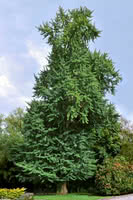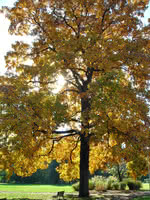Mon-Fri 9am - 5pm Mountain time
Ginkgo Biloba vs Shagbark Hickory
Ginkgo biloba
Carya ovata
NOT AVAILABLE THIS SEASON - MIGHT RETURN
The Ginkgo Biloba is regarded as one of the most distinctive and beautiful of all the deciduous trees, and has remained genetically unchanged for millions of years. Its beautifully fan-shaped leaves develop a clear yellow colour in fall. Graceful and attractive year-round, Ginkgo is the perfect conversation starter in your yard.
Shagbark Hickory is a unique tree both for its looks and uses. Its bark peels into long thin vertical strips giving it a shaggy appearance. This and its golden fall leaves make it a gorgeous looking tree. This species produces tasty hickory nuts once mature. Hickory smoke is also treasured for curing meats and its generally fantastic smell.
This tree is best planted away from any buildings due to a deep taproot and large size. Many people remark on the unusual taproot for this tree that can be over 6 feet deep while the plant only has 2 feet of top growth.
Ginkgo Biloba Quick Facts
Shagbark Hickory Quick Facts
Toxicity: Uncooked nuts in large quantities

